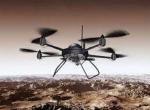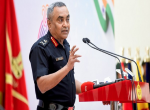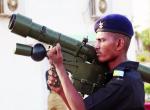Deteriorating security environment in South Asia region along with a massive beef up in defence preparedness by the People’s Liberation Army(PLA) of China, have underpinned the need, as never before for India, to bolster its military might in all its manifestations to blunt the edge of the emerging multi-dimensional security threat.
Moreover, in the context of India’s declared national policy of no first use of nuclear weapons, the country should be extra vigilant in guarding against any threat to its territorial integrity. And looking beyond the possibility of the security threat, India in keeping with its status as an emerging technological power, should showcase its military muscle encasing the technological prowess that is immune to the threats of technology denial regime. Clearly and apparently, India cannot afford to lose the opportunity of positioning itself as a military power of global standing.
Indeed, in the context of the growing need to take care of Indian interests across the world, the need for a heightened situational awareness and quick mobility has become all the more pronounced. Only a well - equipped aerospace command supported by a range of advanced technology satellites could help India meet its emerging strategic challenges and security threats with courage and confidence. Of course, to begin with, India has the expertise, infrastructure and technology to create the nucleus for the proposed tri service aerospace command .But the only stumbling block is the green signal from the ruling dispensation in New Delhi. There is no denying the fact that an Indian tri service aerospace command would be a big morale booster for the Indian defence forces. As such, Government of India should seriously work towards giving a final go ahead for the proposed tri service aerospace command. For the creation of an aerospace command is a dynamic and continuously evolving process focussed on absorbing technological developments as it mainfests.
Indian Air Force (IAF), which has been vigorously advocating the need for an aerospace command for well over five years now, has already made a detailed study of the issues related to the structure and functions of aerospace commands in other countries. But then the type of the aerospace command India would need to set up—of course after getting clearance from the political leadership of the country—would reflect the needs specific to the Indian situation, extent of funds available as well as technology and expertise that could be pressed into service for the purpose. The objectives, however, of the proposed Indian tri service aerospace command, would be similar to aerospace commands in other countries: enhancing situational awareness in all its manifestations, a homogeneous platform for seamless integration of the capabilities of all the three wings of the services and ensuring free access to space while denying the adversary the opportunity to use space platforms in the event of a war. Other well identified objectives of the Indian aerospace command would include setting up a system to give out missile launch warnings and monitoring the launch of enemy satellites. The missile defence shield being put in place by the Defence Research and Development Organisation (DRDO) could very well become an important component of the aerospace command. And so are the unmanned drones for surveillance and reconnaissance, Unmanned Combat Air Vehicles (UCAVs), AWACS(Advanced Warning and Control System) aircraft, a range of missiles meant for a variety of end uses and a constellation of satellites high up in space. Indeed, the whole exercise of creating a multi layered aerospace command should ultimately be aimed at ensuring that in a fast changing battlefield scenario, all the available tools should be harnessed to stay at the winning edge of the war.
Perhaps the biggest trump card in the endeavour to set up an Indian aerospace command lies in the expertise that ISRO has built up in the area of designing and developing state of the art satellites for wide ranging applications. Incidentally, ISRO has so far built and launched more than fifty satellites for uses such as scientific research, earth observation, weather watch as well as communications, broadcasting and navigation. As things stand now, India does not yet have a dedicated defence satellite even as all the three wings of services have been clamouring for exclusive satellite capability to boost their preparedness and fighting fitness. Not long back, DRDO chief V.K. Saraswat had pointed out to the well-conceived plan to build and launch a series of home grown defence spacecraft systems with surveillance, imaging and navigation capabilities that would not only help keep an eye on “hostile developments in the neighbourhood” but also help guide the cruise missiles and high precision weapons to hit targets with a high degree of accuracy.
“There will be a series of defence satellites. Each year, you will find one or two satellites going up. I cannot reveal you the numbers because they are classified,” noted Saraswat. However, he made it clear that each of these satellites would be equipped for a specific mission and would carry payloads for a variety of end uses including surveillance and reconnaissance, imaging, navigation and communications. Going ahead, Saraswat stated that “the army, the navy and IAF each have their own requirements and it would not be appropriate to say how many each of them would need.” According to Saraswat, with these satellites in orbit, Indian defence forces would be in a position to get a holistic picture of the movement of troops and such other things in the immediate neighbourhood. Saraswat also made a point that satellite systems hold the key to the successful operationalization of India’s ballistic missile defence shield.
Saraswat also revealed that the road map of the series of satellites required by the Indian defence forces has been handed over to the Indian Space Research Organisation(ISRO).But then with its current infrastructure and support level, ISRO is having tough time meeting its own requirements. With a single operational launch vehicle in the form of the four stage Polar Satellite Launch Vehicle (PSLV) and a single launch complex spread across Sriharikota island on India’s eastern coast, ISRO is not in a position to accomplish more than 3-4 orbital missions a year. There is no denying the fact that India would need to build a second launch pad which is very critical to boosting the launch missions by a substantial extent. In the context of India’s plan to offer its launch services to international customers, ISRO would need to boost its launch frequencies to at least six a year. China, which has three landlocked launch complexes, is now building an ultra-modern costal orbital complex at Wenchang in Hainan Island which happens to be the epicentre of a massive Chinese naval build up.On its part, ISRO has hinted at a plan for a second launch complex. But whether it would assume a practical shape within a foreseeable future no one is sure as yet.
Similarly, the glaring failure of the Indian space agency to qualify the home grown cryogenic engine stage required to operationalize the three stage Geosynchronous Satellite Launch Vehicle (GSLV) well on time could jeopardise many of the high profile projects lined up by ISRO in the near future. To meet the growing needs of Indian defence forces, ISRO would need to not only build multiple launch centres and a variety of launch vehicles equipped for varying orbital missions but also involve the Indian industry in a big way in the task of building and delivering satellites and launch vehicles in a ready to use condition. Clearly and apparently, India lacks the “industrial culture “ fine-tuned for building spacecraft and space vehicles on a turnkey basis.
Perhaps a major hindrance in the way of setting up the Indian aerospace command is involving ISRO, a civilian space agency committed to the “peaceful use of space,” in the entire exercise. As such, the ruling dispensation in New Delhi should factor the possibility of such a step attracting international censure including the US technology embargo and trade sanction. In fact, in early 1990s, USA had prevented Russia from transferring the cryogenic engine technology to India, by citing the potential for the diversion of such a technology for military build up. In late 1990s, USA had pressurized India into dropping its Agni surface to surface missile programme with the observation that the Agni series of missiles developed under India’s Integrated Guided Missile Development Programme(IGMDP had drawn from the solid fuel technology developed for India’s first civilian basic launcher SLV-3 which had its successful debut flight in 1980.As it is,SLV-3 was developed under the leadership of the former Indian President Dr.A.P.J.Abdul Kalam during his stint with ISRO. Incidentally, Dr.Kalam who subsequently moved to DRDO, spearheaded the IGMDP which served as a launching pad for developing a range of Indian missiles.
Indeed, satellites serve as the “ears and eyes” of a well equipped aerospace command. The stunning success with which US led allied forces were able to pull off their intervention in Afghanistan and Iraq has highlighted the vital importance of the space based assets in realizing the strategic goals in a cost effective and timely manner. Meteorological satellites forecasting weather for facilitating bombing raids and missile launches, navigation satellites guiding lethal weapons to designated locations, reconnaissance satellites locating the exact geographic position of military targets, electronic ferret satellites gathering data on radar frequencies, communications satellites providing real time secure links between defence forces scattered over a vast geographical stretch for a coordinated strategy and ocean watch satellites snooping on the naval movement of adversaries which have all become a puppet in the string of the modern day warfare. Not surprisingly then, the massive intelligence failure suffered by the Indian army before and during the short lived Kargil skirmish of 1999 has been attributed to the lack of access to satellite resources.
On its part IAF is confident that a full fledged tri service aerospace command would go a long way towards ensuring the safety of Indian space assets and guarding the Indian air space with heightened vigil. The IAF’s defence “space vision 2020” outlines the need to evolve a strategy for the optimum utilization of space assets for sharpening its combat preparedness. By all means, for IAF uninterrupted access to dedicated constellation of military satellites is critically important to sustain its strategic superiority through the concept of “see, reach, hit and protect”. Satellites hold the key for the coordinated and synchronized functioning of the aerospace command by seamlessly integrating weapons systems, missiles, radars and sensor suites, unmanned aerial vehicles, weaponzied drones, electronics and communications network , fighter jets, transport aircraft, logistics and support systems, defence forces spread across a vast geographical swath for sustaining “strategic superiority” from the word go.
The clamour for setting up an Indian tri service aerospace command assumed strident dimensions following the early 2007 anti satellite test carried out by China. This exercise meant to refine Chinese space warfare techniques involved the destruction of an aging weather watch satellite positioned at an altitude of 537 kms above the earth by firing a ground based medium range ballistic missile. And while addressing the United Commanders Conference in New Delhi in mid-2008, Antony did not mince his words while underscoring Indian angst over the “emergence of anti satellite weaponry, a new class of heavy lift off boosters and improved array of military space devices in our neighbourhood.”
Of course, Saraswat has been stressing on the need to develop technological elements of anti satellite systems to prevent the rogue satellite systems from immobilizing the Indian space assets. He has also hinted at developing space laser sensor to monitor and track space based killer devices. To support the Indian aerospace command, DRDO has also a plan up its sleeve to develop and launch electronics intelligence and communications intelligence satellites as exclusive defence space platforms.
Space capability also constitutes a key element of the network centric system to integrate the resources of all the three wings of the services. Air Force Network (AFNET), inducted into IAF in 2010, on which an integrated air control and command is being built, will be allotted a slew of transponders on-board Indian satellites in INSAT constellation being operated by ISRO. The fibre optic technology based AFNET grid which will help link IAF’s command bases, radars, missiles, batteries and airborne fighters would ultimately pave the way for the complete situational awareness of the area that IAF wants to secure and dominate. In the ultimate analysis, the success of the aerospace command depends on the smartness with which the information super highways and communications channels are exploited for real time coordination of the “strategic moves” of the defence forces spread across a vast geographical swath.
Equally critical to the successful operation of an aerospace command is a versatile and well endowed C4ISR system. While the C 4 components of the system—computers, command , communications and control—constitute the backend, ISR(intelligence, surveillance and reconnaissance) make up for the front end. The ISR made up of orbital, airborne, maritime and fixed or mobile, ground based sensor systems help find, fix and track hostile targets and evaluate the damage to enemy targets. On the other hand, with an increasing number of smart weapons including missiles rapidly becoming autonomous, they would need to be controlled and manipulated through a network enabled command and control structure supported by a constellation of satellites.
Meanwhile, with the Indian Space Research Organisation(ISRO) preparing for the launch of India’s fully home-grown microwave earth observation satellite RISAT-1 sometime towards the end of April, Indian defence forces will have the reason to cheer. For they can look forward to fall back on a “smart eye in the sky” to enhance their situational awareness and surveillance capability along India’s borders with China and Pakistan.
Significantly, it is the all weather and day and night imaging capability of RISAT-1 that is particularly relevant to Indian defence forces from the point of view of strategic planning. For the high performance Synthetic Aperture Radar (SAR) payload of RISAT-1 is capable of functioning even under conditions of cloud, dust and haze. Right now, Indian defence forces have limited access to the IRS constellation of earth observation spacecraft being operated by ISRO. But then these satellites being passive systems can function only under the conditions of brightness.
In April 2009, India’s four stage PSLV had orbited RISAT-II microwave imaging spacecraft that ISRO (Indian Space Research Organisation) had realized in tie up with Israel Aerospace Industries (IAI) on a fast track mode. The launch of 300-kg.RISAT-II featuring an X-band SAR payload was widely perceived as a response to the insecurity complex generated by the 26/11 Mumbai terror attack. The all weather RISAT-II has been described by strategic analysts as a high tech space platform meant to keep a tab on terrorist movements along India’s international borders with Pakistan.
Clearly and apparently, Indian defence forces can easily exploit the potentials of RISAT-II to boost the intelligence gathering capability of Indian armed forces in big way. For earth observation and surveillance are considered the two faces of the same coin. RISAT-II’s revisit capability of four to five days is considered advantageous factor in the dynamic monitoring of the developments of strategic importance. Added to that the highly agile RISAT-II can be manoeuvred to change its viewing angle as per the requirements of the users.
At the moment, Indian defence forces don’t have a dedicated satellite systems meant for surveillance, reconnaissance and intelligence gathering .Of course, the ISRO built GSAT-7 satellite which is expected to be launched during 2012-13 will serve as Indian navy’s exclusive space platform for reliable , robust and fool proof communications.
While India has a robust level of technological infrastructure and human expertise required to create a tri service aerospace command in a phased manner, the political leadership of the country should shed its “complacency and indifference” to give a go ahead to the setting up of the tri service aerospace command. For in the context of growing, multi-dimensional threat to India’s national security and taking into account the need to position India as a military power of global standing, the setting up of a tri service Indian aerospace command cannot be delayed under any circumstance. For the Indian defence forces, an aerospace command could very well be a force multiplier and game changer. And for India, it would be a hedge against the forces bent upon challenging the territorial integrity of the country.
Author is Research Fellow at Vivekananda International Foundation
Published Date : 11th April 2012






.jpg)


Post new comment